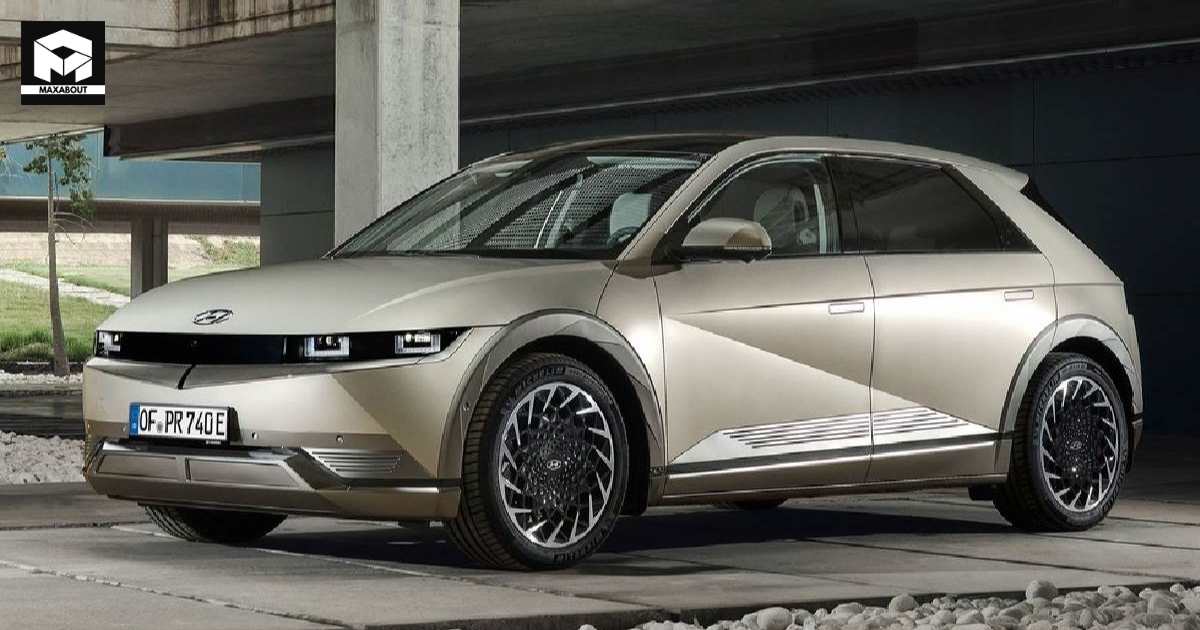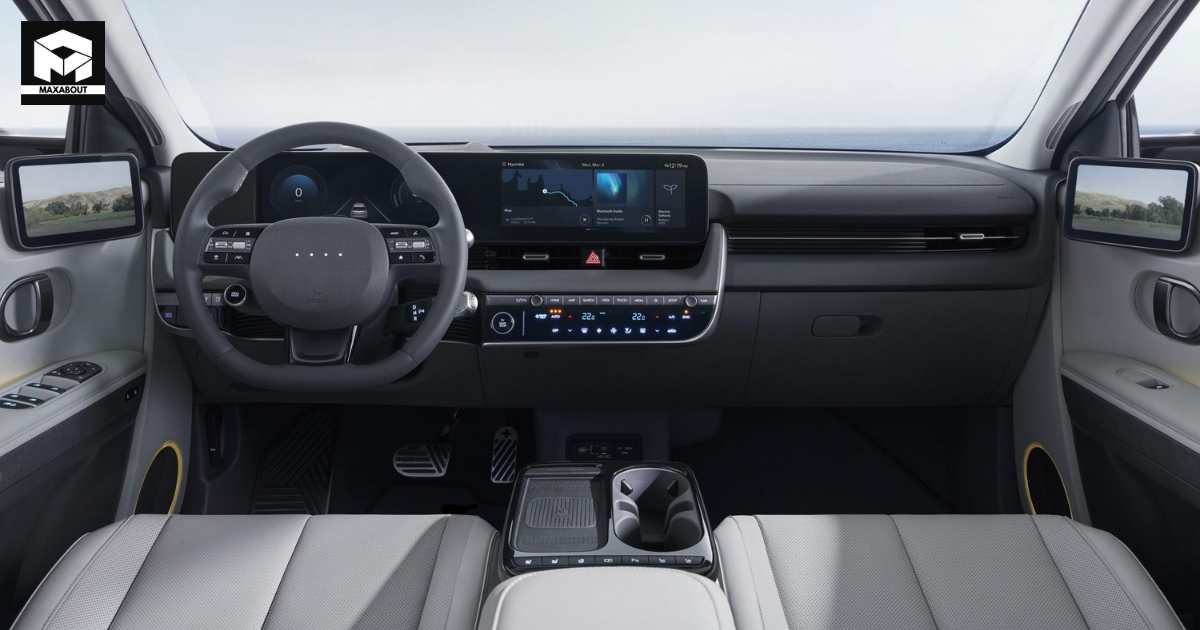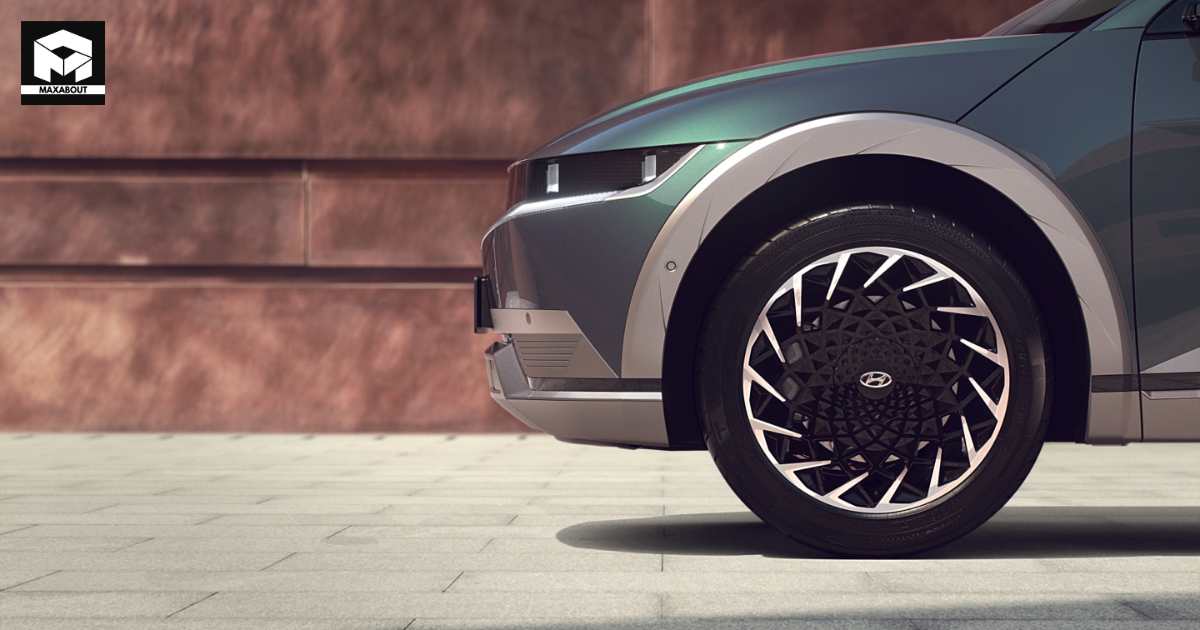The Hyundai Ioniq 5 has recently received a facelift and has been unveiled to the global market. Along with a larger battery pack for a longer range this upgraded electric SUV also offers improvements to its chassis for safer and better handling. In addition to the facelift, Hyundai has introduced a sportier variant, the Ioniq 5 N Line which is positioned below the high-performance Ioniq 5 N. Initially, both the facelifted Ioniq 5 and the Ioniq 5 N Line will be available in Korean markets, with subsequent releases in other global markets, including India.
Design Updates

The facelifted Ioniq 5 retains its overall design but comes with updated front and rear bumpers that add a fresh look to the vehicle. The aerodynamic alloy wheels have been redesigned, and the rear spoiler has been extended by 50 mm to enhance aerodynamic efficiency. These updates have resulted in the Ioniq 5 facelift being 20 mm longer than its predecessor, although its width, height, and wheelbase remain unchanged.
Battery and Range

One of the significant updates in the facelifted Ioniq 5 is the inclusion of a larger 84 kWh battery pack, an increase from the previous 77.4 kWh pack. This larger battery is expected to provide an increased driving range, although Hyundai has not yet specified the exact range figures for this version. For context, the current India-spec Ioniq 5 features a 72.6 kWh battery pack (usable capacity) paired with a single rear-wheel-drive electric motor that produces 217 PS and 350 Nm. It boasts an ARAI-claimed range of 631 km.
Interior and Features
Inside, the Ioniq 5 facelift sees updates to the center console, which now includes physical buttons for various functionalities such as heated and ventilated front seats, a heated steering wheel, and a parking assist function. The wireless charging pad has been relocated to a more accessible position on the upper part of the console. The center pad of the steering wheel has been updated with pixel lights for a modern touch.

With the Ioniq 5 makeover, Hyundai has also unveiled the next-generation infotainment system known as the Connected Car Navigation Cockpit (ccNC). A quick settings menu that can be accessed by swiping down from the top of the screen the ability to customize home screen cards, and the ability to view many bits of information on a single screen are just a few of the additional features that this system offers. Furthermore, search and home buttons have been added to the set of hotkey buttons that are situated beneath the AC vents.
The infotainment unit retains the same integrated dual 12.3-inch display setup (one for the infotainment and the other for the driver). Other features in the Ioniq 5 facelift include a dashcam setup, remote folding second-row seats, ventilated front seats, and dual-zone climate control.
Safety Update
In terms of safety, the Hyundai Ioniq 5 facelift has reinforced the B-pillars to enhance side collision protection. The electric crossover SUV already comes with a full suite of advanced driver assistance systems (ADAS) features, and the facelifted version adds additional functionalities such as a hands-on detection (HOD) steering wheel, lane keeping assist 2, remote smart parking assist 2 (RSPA 2), and forward/side/reverse parking collision-avoidance assist. The facelifted model now also comes with eight airbags for improved safety.

Enhanced Driving Experience
While the exterior changes in the facelift are subtle, Hyundai has focused on under-the-hood improvements to enhance the driving experience of the Ioniq 5. The overall structure of the EV has been strengthened to reduce motor noise, and additional sound insulation has been provided for the rear wheel motor. The shock absorbers have been updated for smoother ride quality, and measures have been taken to reduce vibrations in the steering wheel. The reinforcement at the rear wheel and the lower part of the Ioniq 5 has been doubled for improved stability and handling.
Hyundai Ioniq 5 N Line
Alongside the updated Ioniq 5, Hyundai has also debuted the new Ioniq 5 N Line. This variant is part of Hyundai's N Line product category, which focuses on sporty looks rather than outright performance, which is reserved for the true N models like the Ioniq 5 N. The Ioniq 5 N Line features a sportier front and rear bumper design, an N Line badge on the front grille, side skirts, and 20-inch aluminum alloy wheels.
The interior of the Ioniq 5 N Line has been updated with an N Line-specific dashboard theme and steering wheel, sport seats with contrast stitching, and the N Line logo, as well as metal pedals for a sporty and premium, feel.
Expected India Launch & Price
While Hyundai has not yet confirmed the launch timeline for the Ioniq 5 facelift in India, it is expected to be launched by late 2024, with a starting price of around Rs 50 lakh (ex-showroom). The current India-spec Hyundai Ioniq 5 is priced at Rs 45.95 lakh (ex-showroom pan-India) and competes with the Kia EV6, as well as serving as an alternative to the Volvo XC40 Recharge and C40 Recharge.

